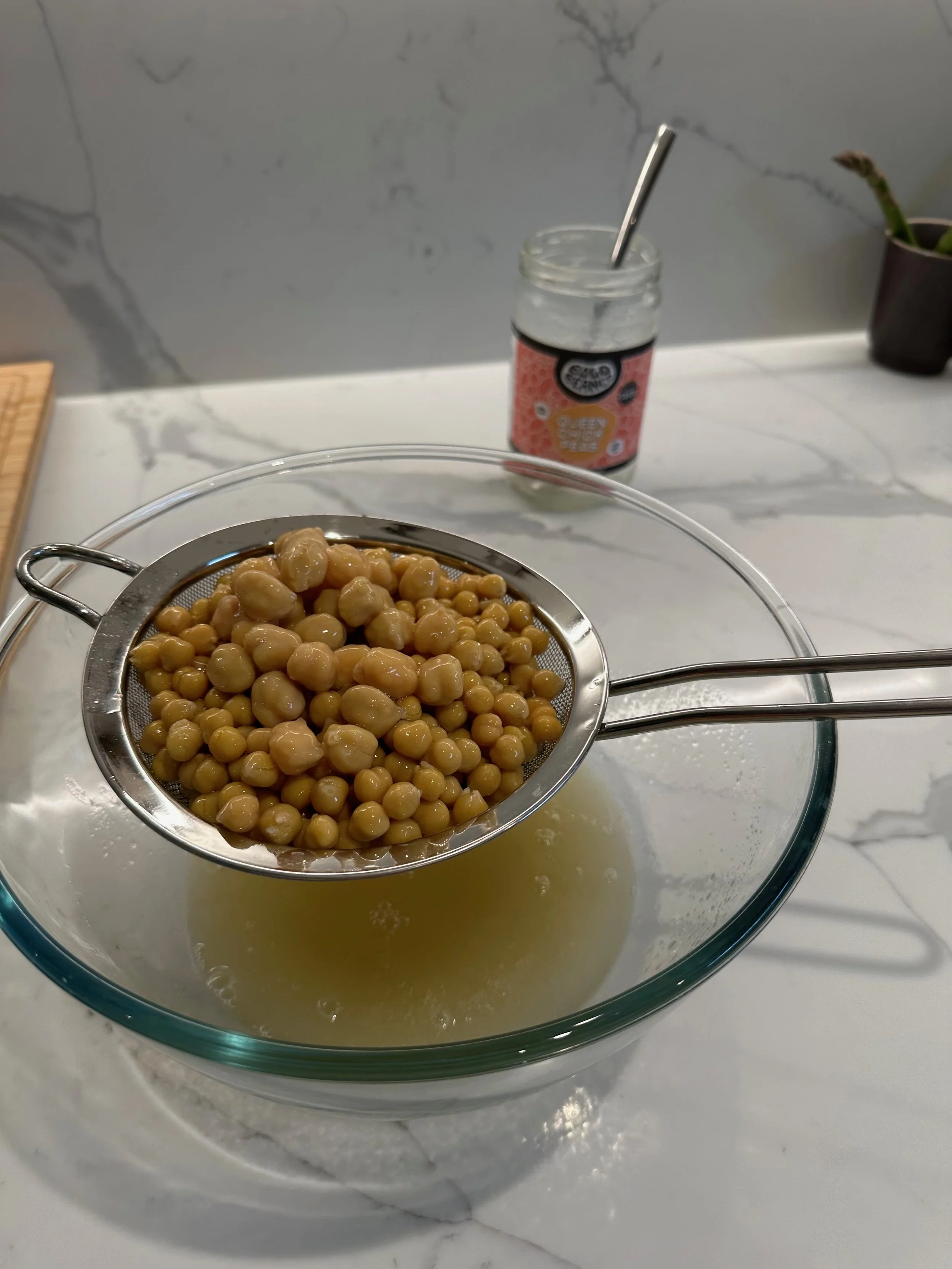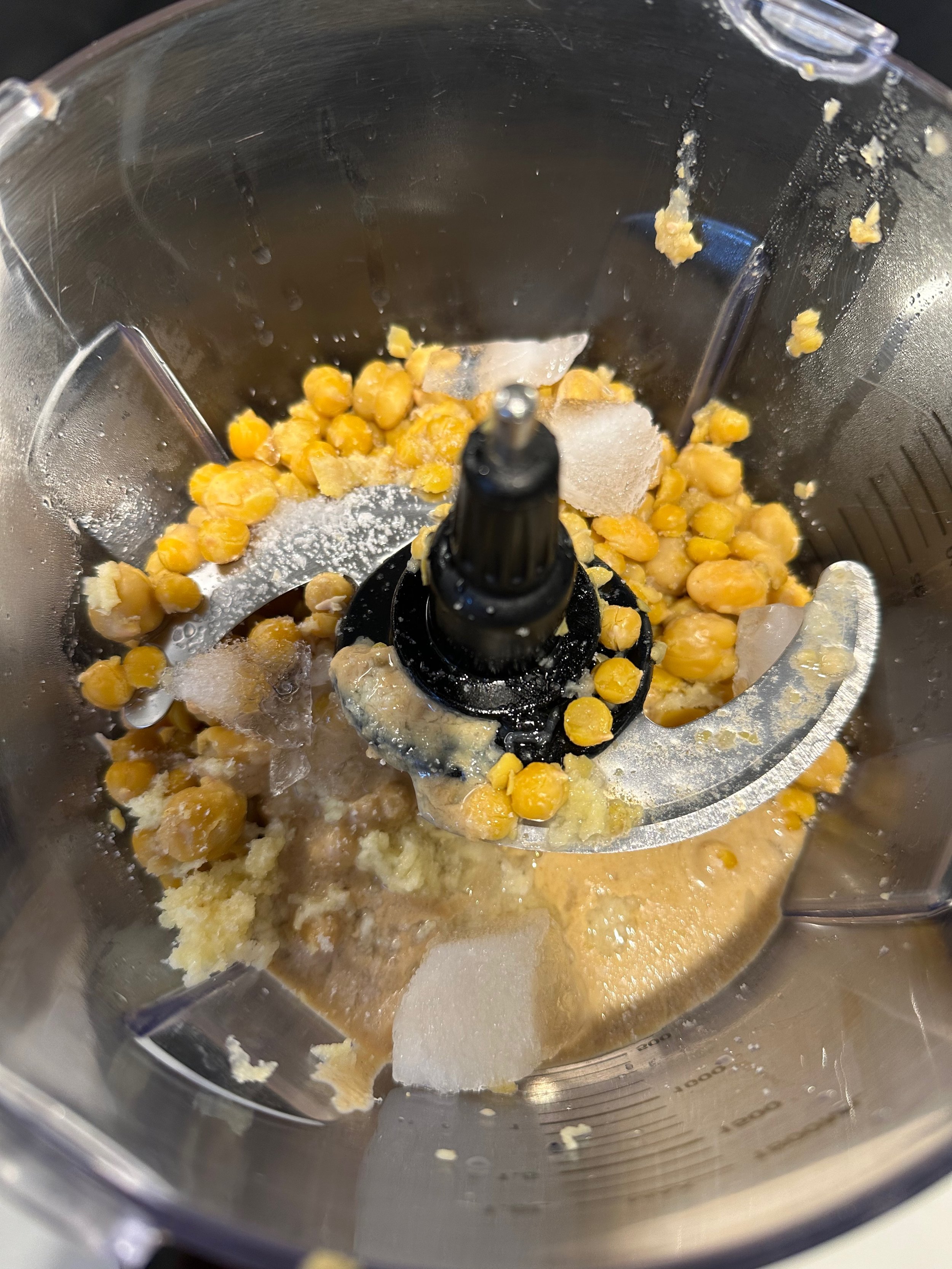Smoother than smooth Hummus
Also spelled hommus or houmous.
Hummus served with homemade Rye Crispbread
Hummus, a creamy blend of chickpeas, tahini, lemon juice, and garlic, has been a staple in Middle Eastern diets for centuries.
Originating from the Levant region, this versatile dip has a rich history that dates back to ancient times. (Levant = modern day Turkey, Palestine, Cyprus, Israel, Jordan, Lebanon and Syria).
The full name of the prepared spread in Arabic is ḥummuṣ bi ṭaḥīna which means 'chickpeas with tahini'.
Enjoyed initially as a dip with warmed pita bread or fresh vegetables, hummus is also used in the West as a spread in sandwiches and wraps, adding a flavourful, nutritious boost to any meal.
Making fresh hummus at home
After many attempts, I’ve found the secret to achieving a smooth, silky consistency to hummus. Maybe everyone else knew this already, so excuse me if I’m stating the obvious. This method of smoothing hummus involves one critical step that, while time-consuming, is crucial for achieving a perfect finish.
Ingredients
2 tins of chickpeas (800g), drained (480g)
1/2 teaspoon ground cumin (freshly ground if possible for the best aroma and flavour)
120g Tahini (may need more, adjust to taste)
1 garlic clove, crushed (adjust to taste)
2 tbsp lemon juice (or more to taste – about half a large lemon for 2 tbsp)
Salt (Kosher or sea salt preferred, but table salt will do)
A few ice cubes (25-50g)
Method
Prepare the Chickpeas
Drain the tinned chickpeas and spread them between two clean tea towels. Gently rub the top towel over the chickpeas for about 20 seconds to release their outer skins; be mindful not to rub too hard or you will crush the chickpeas (this method makes it easier to release the skin / peel the skin off but you can pop them off in between your fingers if you prefer). Lift the top towel and discard the skins.
This step is essential for a smooth hummus. It may seem tedious, but I actually find it quite therapeutic and worth the effort.
Cook the Chickpeas
Place the peeled chickpeas in a saucepan, so that they are just covered with water. Add 1 teaspoon of salt and 1/2 teaspoon of ground cumin. Simmer for 15 minutes to soften the chickpeas further.
Blend the Hummus
Drain the chickpeas into a bowl, reserving the cooking water. Put the warm chickpeas in a food processor with 120g of tahini, crushed garlic, lemon juice, a couple of ice cubes (25-50g), two tablespoons of reserved chickpea water, and a pinch of salt.
Blitz until nearly smooth, scraping the sides down occasionally to ensure everything is well incorporated. Adjust the tahini, garlic, lemon, and salt to taste, adding more chickpea water if needed. Continue blitzing until very smooth (this might take a few minutes). Don’t worry if the hummus seems too loose; it will thicken as it sits.
Note: Do consider what you’re serving your hummus with. For example, if you’re serving it with salty bread or crispbread, you may want to hold back from adding more salt to taste in your hummus, as the bread will enhance this when served together.
Serve
Spread the hummus in a shallow bowl, creating a well in the centre. Top with a generous drizzle of extra virgin olive oil and personalise with herbs, paprika, or toasted nuts as desired.
The flavour combos are endless, so be adventurous. Enjoy!
If not serving immediately, store in a sealed container in the fridge for up to 2 days.






